Kayak safety
Simple Rescue techniques for completely inexperienced paddlers
WHO DO NOT KNOW HOW TO SELF-RESCUE AND PAIR-RESCUE
BASICS
You must be able to swim at least 200 m in open water!
Always wear your life jacket!
Always carry your charged mobile phone in a waterproof case on your body (and not in the kayak)!
Do not paddle alone and paddle close to land!
No alcohol before or during the paddle!
Bring a change of clothes, sunscreen and a cap and preferably a paddle line on your paddle.
Always keep an eye on the weather!
SIMPLE TIPS FOR SAFE PADDLING
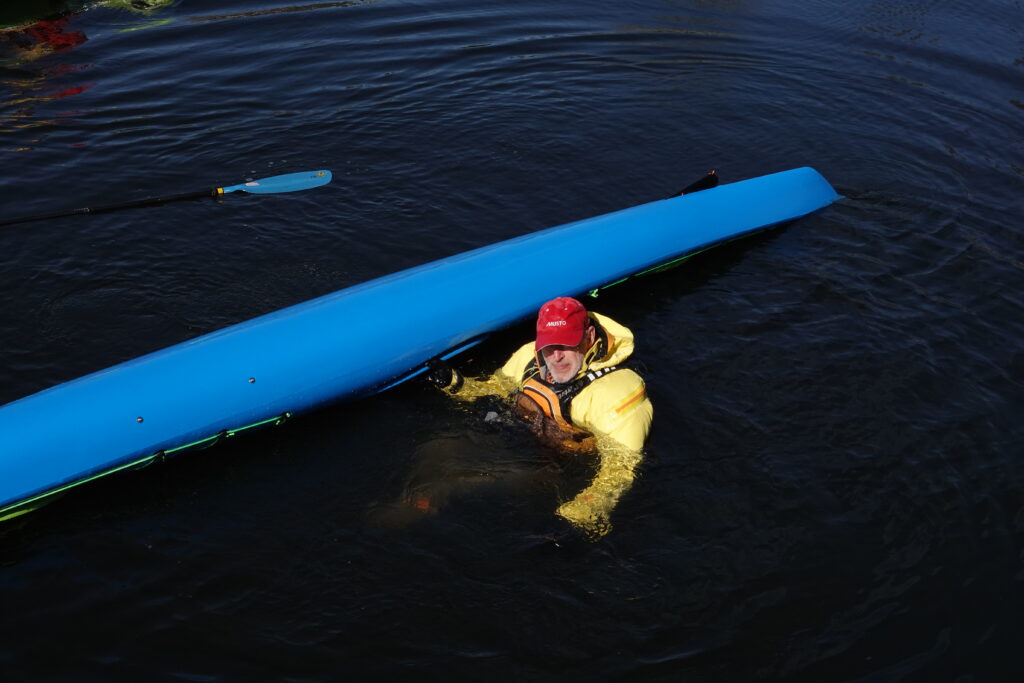
DO NOT LET GO OF THE KAYAK
Overturning is not dangerous! You will automatically fall out of the cockpit and float up with the help of your life jacket. Hold on to your kayak, which is now upside down and therefore less exposed to the wind. Breathe and float with the help of your life jacket and wait/call for help.
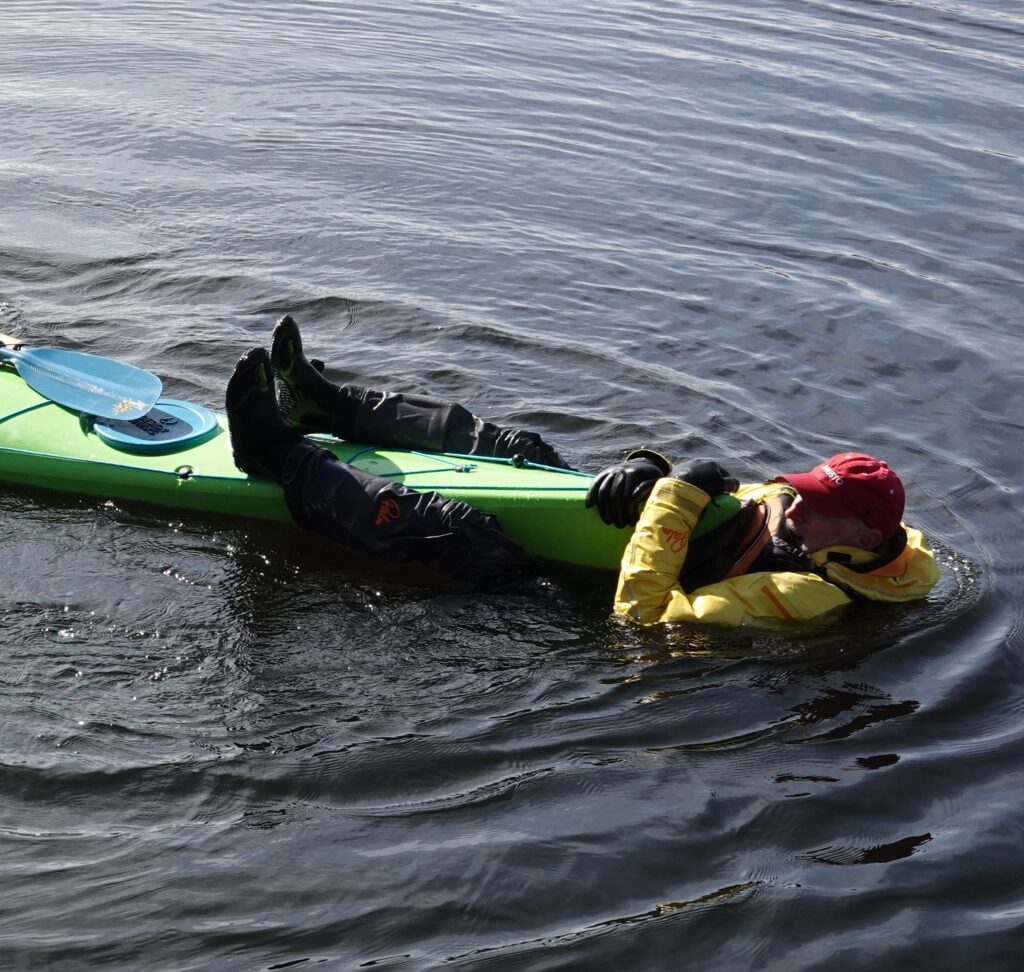
hANG
HANG If the water is cold, it can be good to get your head, arms and legs out of the water. Turn your kayak right side out and hang from your kayak as shown in the picture.
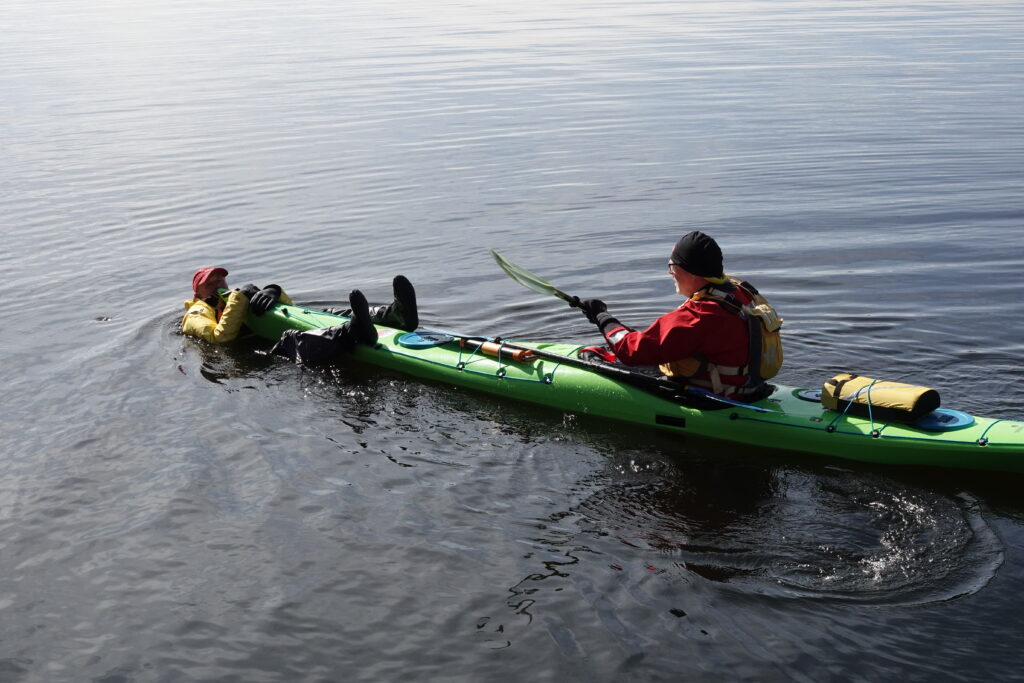
eASY TOWING
You can also get a ride on another paddler’s kayak nose to the nearest shore. A safe way to get ashore. The kayak can be towed by the person who rescues you (using the paddle line, for example), by another buddy, or picked up when you are ashore.
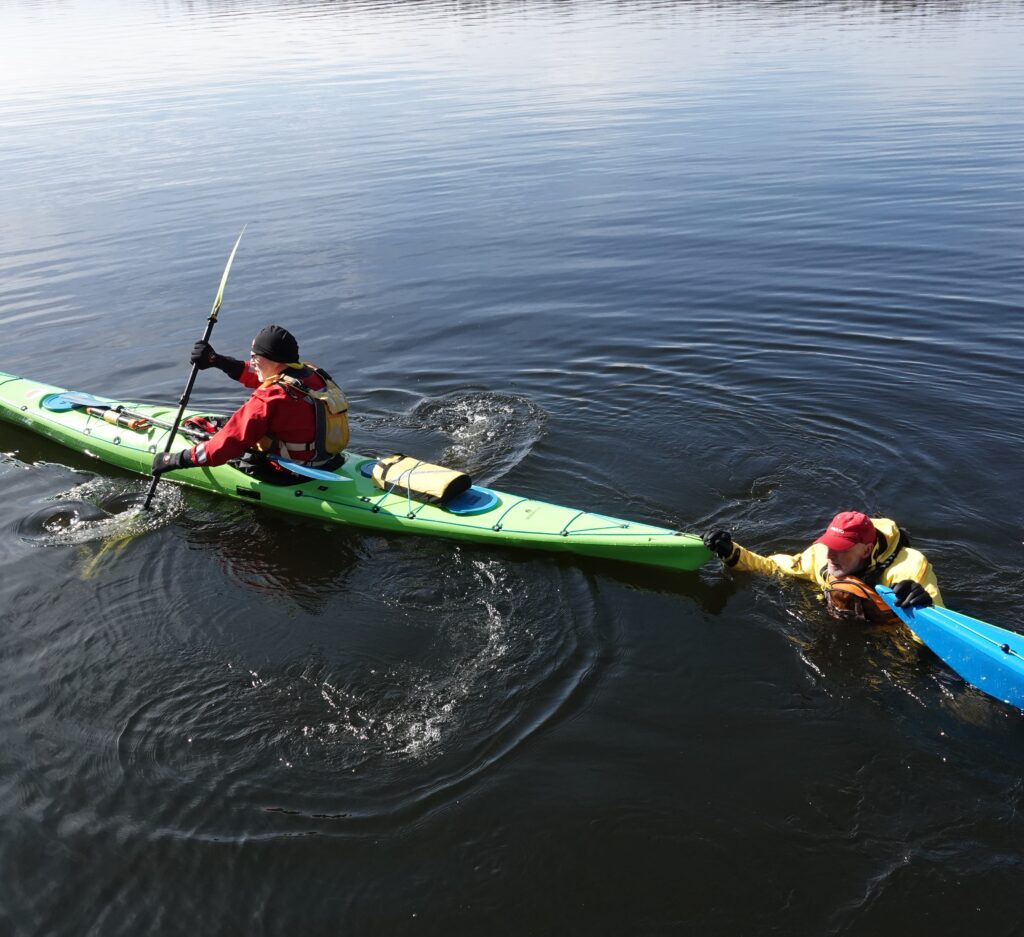
tOWING OF PADDLER & KAYAK
A paddler without a tow line or other string can tow you and your kayak by hanging onto the paddler’s stern while holding onto the nose of your kayak. This technique can be used in calm water and close to land.
get on the kayak and paddle without a paddle
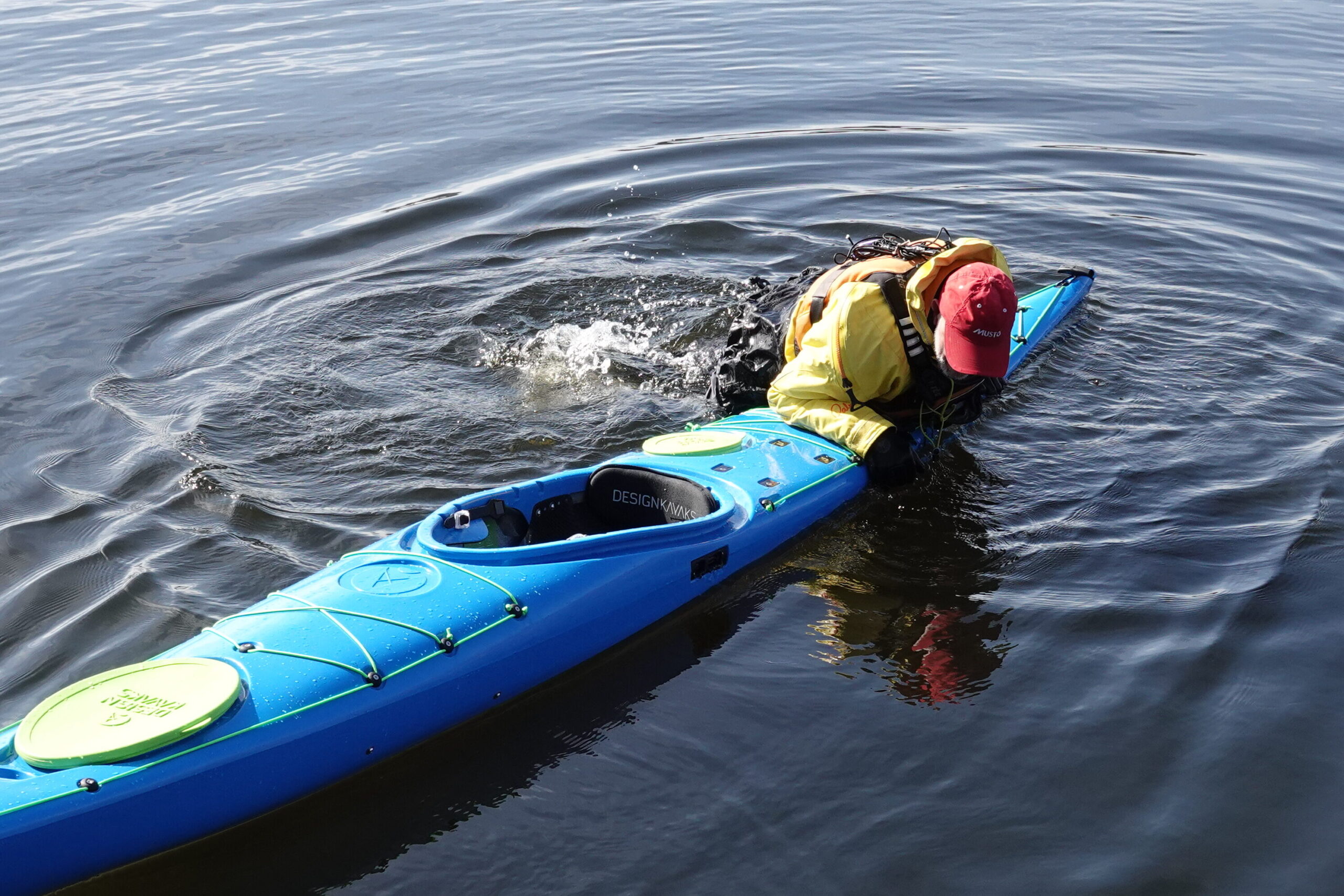
If you are alone, cold and/or have lost your paddle, you can get onto the stern deck of your kayak. Turn the kayak right side out and lie across the far back of the stern deck by grabbing the deck rope on the opposite side of the kayak, pushing yourself up with your arms and kicking hard with your legs.
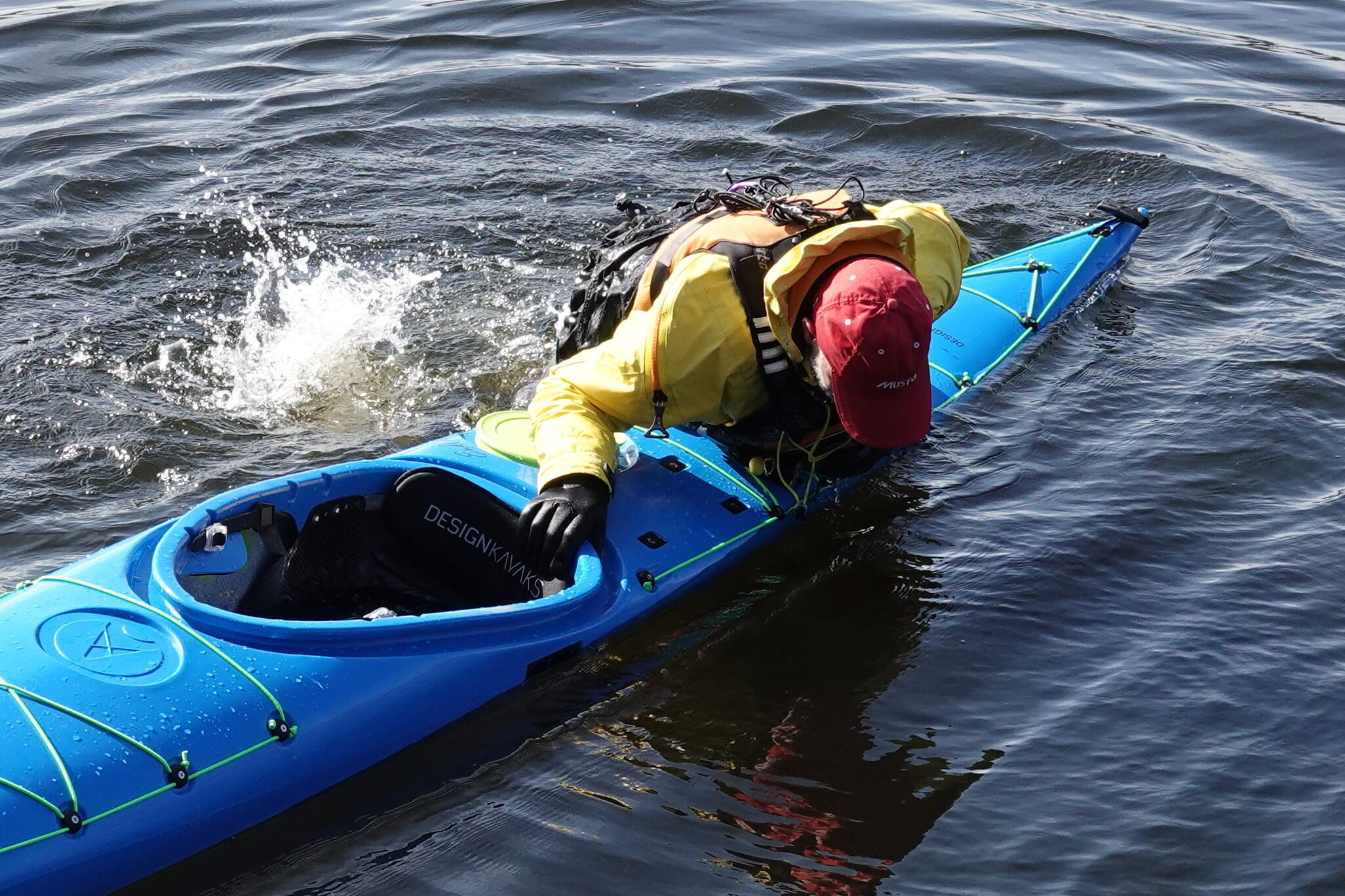
As you lie with your chest over the aft deck, move one hand to the cockpit edge and pull your upper body closer to the cockpit. Continue to bounce your legs for stability.
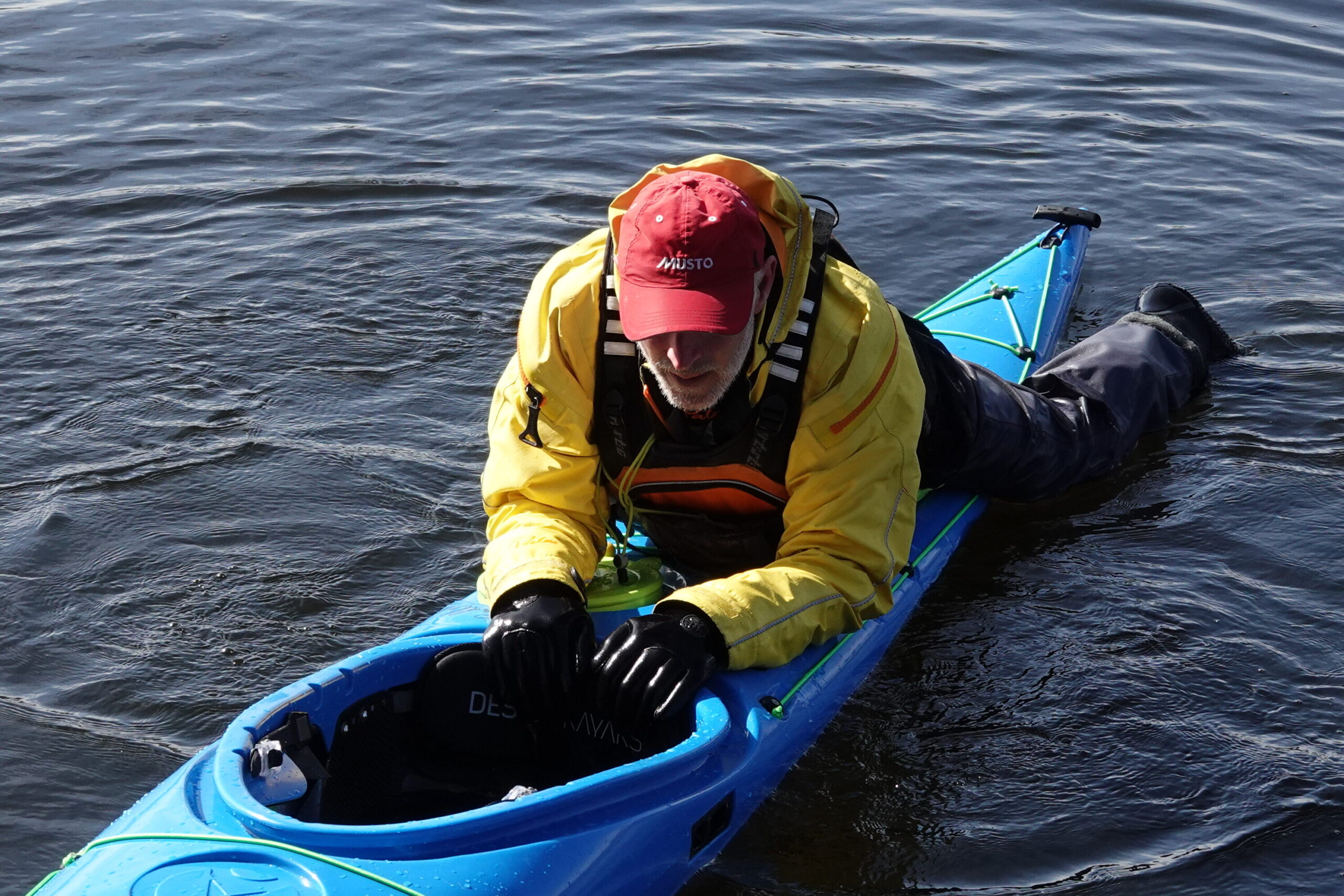
Now you can move one leg over the kayak and center your upper body on the kayak. Now you are stable, out of the water with almost your entire body and can exhale and rest for a while.
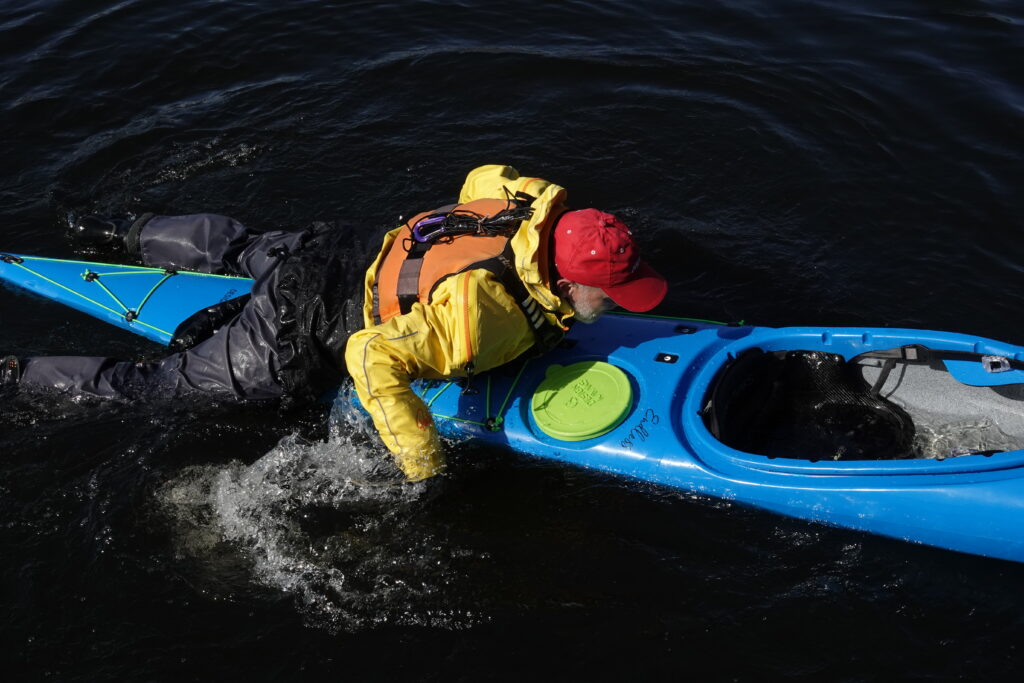
Use your arms as paddles and paddle to the nearest land.
Instructional video
to get back into the kayak with the help of a buddy
